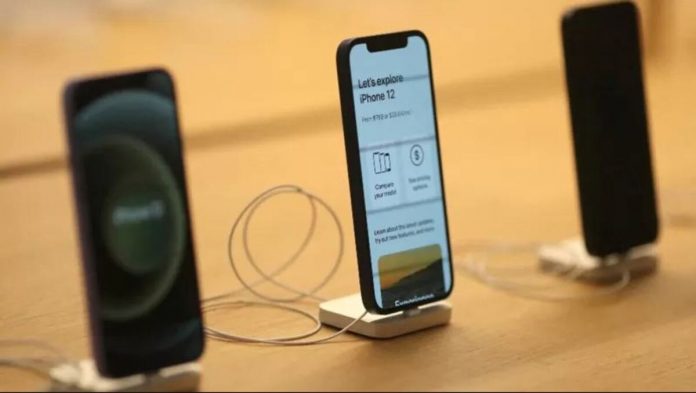Buy now and pay later: why is the new buy option causing controversy?
- June 10, 2022
- 0
“Buy now, pay later” service to be launched by Apple in the United States by the end of the year | GETTY IMAGES Apple has joined the burgeoning
“Buy now, pay later” service to be launched by Apple in the United States by the end of the year | GETTY IMAGES Apple has joined the burgeoning

Apple has joined the burgeoning buy-now-pay later business with a personalized service called Apple Pay Later.
The service was announced earlier this week at Apple’s Worldwide Developers Conference 2022 and will initially launch in the United States later this year.
Pay Later will be integrated into the Apple Wallet or Wallet app and can be used for any purchase made through Apple Pay.
Users will be able to divide the cost of a purchase into four equal payments with no interest or commissions distributed over a four-month period.
However, Apple will first do a soft credit check on users who want to use the service.
The tech giant claims to have designed the feature with the “financial health of users” in mind.
Apple is likely trying to consolidate its position in the world of consumer finance and increase its profitability.
Consumers also need to be aware of the risks of using this new service.
With the launch of Pay Later, Apple will compete with other similar fintech companies, including PayPal, Block, Klarna, and AfterPay, which have seen their share prices plummet after the announcement of the new service.
Apple has its huge market, brand strength, and ability to attract millions of people to its products and services.
And with its focus on customer experience, Apple has managed to build a community of die-hard fans. There is no doubt that the company is one of the favorite brands of consumers.
Apple has also built an ever-growing ecosystem where users are encouraged to access Apple products and services as much as possible, for example, by paying via their iPhone rather than a debit card.
The tech giant is focusing on the consumer experience while offering ways to integrate previously separate computing capabilities into a phone or wristwatch.
Pay Later further enhances this customer-centric experience. One more way users can integrate all the tools they need in one ecosystem.
Apple can generate financial gain through Pay Later.
iPhone-based payment services are accepted by 85% of US retailers.
A 2021 survey found, for example, that around 26% of online shoppers in Australia used “buy now, pay later” services.
As Apple customers increasingly use the Pay Later service, the giant will leverage retailers’ payments to Apple, merchant fees, to offer Apple Pay to customers.
The company will also gain valuable insights into consumers’ purchasing behavior, allowing them to predict their future preferences and spending.
To offer a “buy now, pay later” service, Apple has joined forces with Goldman Sachs, which will finance the loans.
This relationship has been in effect since 2019. Goldman Sachs has acted as a partner for Apple’s credit card (but not affiliated with Pay Later).
It is a strategic partnership that has helped Apple gain a strong foothold in the world of consumer finance.
The reality is that the unregulated world of buy now pay later finances doesn’t bode well for all consumers.
Younger demographics (such as Generation Z and Generation Y) and low-income households may be more vulnerable to the risks associated with using these services and may accumulate debt as a result.
Purchases made through ‘buy now, pay later’ schemes can be driven by the desire to own the latest gadgets and luxury products powered by smart marketing campaigns.
Such schemes can accustom consumers to shopping without feeling the pain of leaving cash.
From a consumer psychology perspective, these services promote instant gratification and involve young people in their consumption routine.
In other words, they may consistently spend more money on purchases than they can actually spend.
On the other hand, a consumer’s failure to pay a Pay Later fee will adversely affect their credit rating, which can have negative consequences for traditional loan or credit card applications.
Focusing on consumer behavior can also trigger what’s called the “ownership effect.” This term refers to the fact that people can be hooked on the products they buy and are less likely to return them, even if they can’t pay for their purchase.
Technology-driven, consumer-focused marketing gives Apple an edge over other “buy now, pay later” plans.
The company ensures that the new service is designed with consumers’ financial health in mind.
But as with any of these services, consumers need to be aware of the risks and handle them carefully.
Source: El Nacional
Alice Smith is a seasoned journalist and writer for Div Bracket. She has a keen sense of what’s important and is always on top of the latest trends. Alice provides in-depth coverage of the most talked-about news stories, delivering insightful and thought-provoking articles that keep her readers informed and engaged.